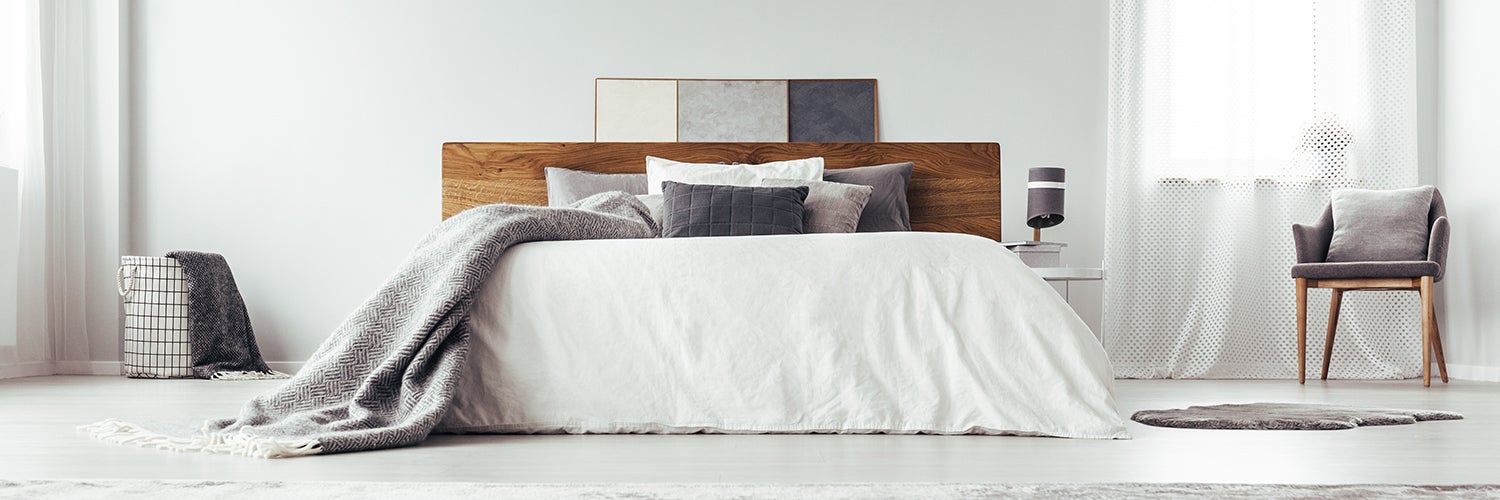Suppose they gave a trade show and nobody came (at least, in person)?
This week has seen yet another market, Home Textiles Week, held online instead of in person at its usual New York showroom locations. This week also marks two full years since the last in-person version of this industry event, which brings together buyers and sellers of bed, bath and other soft home products with the nation’s biggest retailers. And from the looks of it, the next scheduled market in October could well be virtual, too.
More than 1,000 people registered for Home Textiles Week, which featured virtual showrooms, a directory of suppliers, and a full program of speakers, seminars and educational sessions. The event was co-sponsored by the trade group Home Fashion Products Association and the industry’s primary business publication, Home Textiles Today.
The virtual nature of the show didn’t preclude buzzworthy programming. One highlight was the North American debut of the fabled Heimtextil trend forecast, normally presented at the international textiles fair in Frankfurt in January but canceled this year. Trend expert Anja Bisgaard Gaede of the Danish fashion forecasting service Spott Trends highlighted four industry themes in her presentation—Re-Purpose, Re-Wild, Re-Inforce and Re-Vive—and predicted that earth-friendly, eco-centered designs would be especially important as the world emerges from the pandemic.
Also noteworthy was a keynote presentation with Bed Bath & Beyond chief merchandising officer Joe Hartsig. That same day, the retailer had formally introduced the first of what will eventually be a dozen “owned brands,” private-label programs designed to create exclusive merchandise across multiple categories. Nestwell is the first, with an emphasis on bed and bath classifications, and the company eventually expects these brands to account for as much as a third of its overall volume by the time the three-year program finishes its rollout.
Two other key presentations focused on the overall retail sector: Melissa Gonzalez, CEO of the retail consulting firm The Lionesque Group, spoke about the reemergence of physical retailing in the post-pandemic era; and Dana Telsey, CEO and chief research officer at Telsey Advisory Group, discussed the strength the home sector has shown over the past year and her belief that it would continue at least through the balance of 2021. Other programming over the course of the week illustrated a wide range of attendee interests and included sessions on cotton pricing and availability, health and wellness fibers, treatments and constructions that are drawing attention in the COVID era, and the role of virtual B2B selling platforms.
Even as trade shows continue to do their best to inform and connect industry players, the fate of virtual markets remains uncertain. While some shows have been canceled or have gone online, other markets for gift, home decor and furniture are being held live this year—as has already happened in Dallas and Atlanta, and is set to take place in Las Vegas in two weeks and High Point in June. In-person attendance so far has been better than expected—even if not up to pre-COVID standards.
For home textiles, what happens next remains to be seen—and is complicated by the fact that while the main showroom building in New York, 295 Fifth Avenue, was sold to developers in 2019 and is being converted to office space, many suppliers have not yet relocated. Until the pandemic really recedes and the big national retailers begin to travel their merchandising staffs again, it’s very much a wait-and-see situation—virtually and literally.
The Home Textiles Week virtual market site will be online through the end of August. All program sessions, virtual showrooms and directory listings are available here.
Homepage image: ©Photographee.eu/Adobe Stock
____________
Warren Shoulberg is the former editor in chief for several leading B2B publications. He has been a guest lecturer at the Columbia University Graduate School of Business; received honors from the International Furnishings and Design Association and the Fashion Institute of Technology; and been cited by The Wall Street Journal, The New York Times, The Washington Post, CNN and other media as a leading industry expert. His Retail Watch columns offer deep industry insights on major markets and product categories.





























